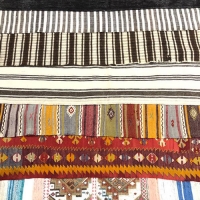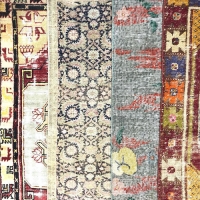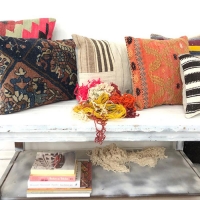Rugs
In terms of traditional weaving, rugs have an important place in history. In many countries and regions, the art of kilims is in an important position. In terms of local examples of rugs, details such as patterns, colors and materials are in a different place. When we consider the rugs in terms of technical characteristics, it is possible to reach many different points. Carpet and kilim art has always been evaluated in different places in handicrafts.
Although local and regional rugs are important in terms of weaving, it is obvious that they are not adequately researched and introduced. That's why art lovers should care about rugs and carpets. The fact that the rugs weaved in the past did not gain a commercial character and that they were limited to the houses weaved only made it difficult to recognize these rugs. Therefore, it was limited to the region where it was produced.
RUG TYPES
Rugs include in various forms, including rugs, floor rugs and prayer rugs. Load rugs vary from locality to locality. Cicim, bell and sumac, which are another flat weave spread, are traded in different regions with different techniques.
In time, cicim, bell and sumac are mostly used in the production of sacks and saddles. It is seen that the narrowest 85 cm for the load and floor rugs is used as the longest size 430 cm. In prayer rugs, it is used in applications where the narrowest is 90 cm and the longest is 240 cm. Ideal sizes, 100 - 110 cm for the width, 150 - 160 cm for the use areas are available. When seen from this point of view, it is seen that the neck is 2/3.
TRADITIONAL RUGS
In some traditional rugs, red, yellow, white, blue and green colors are commonly used. With the use of chemical dyes, compatible and pastel colors have been replaced by bright, raw and contrasting colors. At the beginning and at the end of the local textures, the narrow curves are called feet and the large curves on the sides are called yelen. There are no borders between the weavings. There are five footings with the most number of feet. Local samples are divided into five main groups according to their composition types. It is the most common vertical axis. For carpets and rugs, sometimes visual themes may vary.



